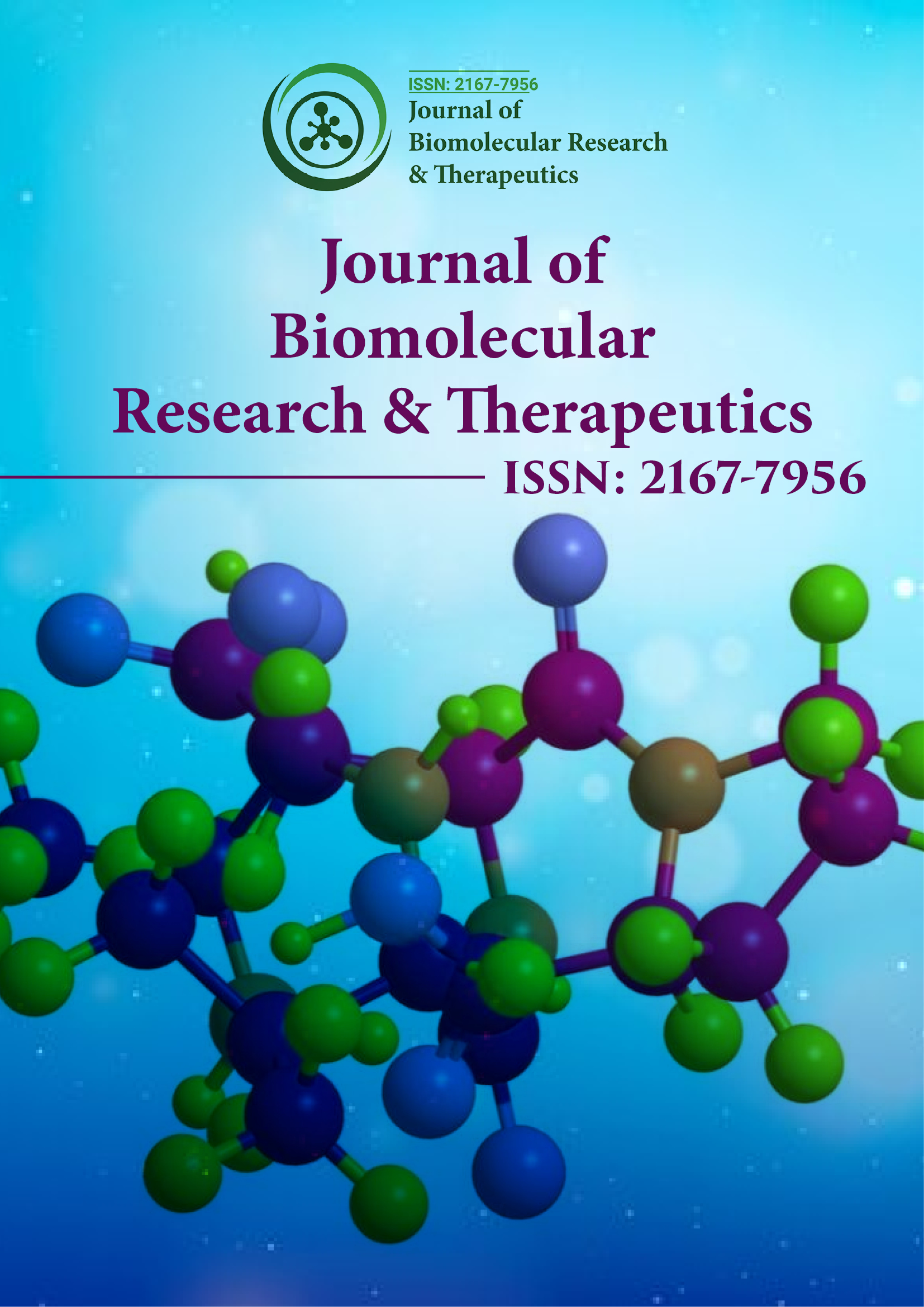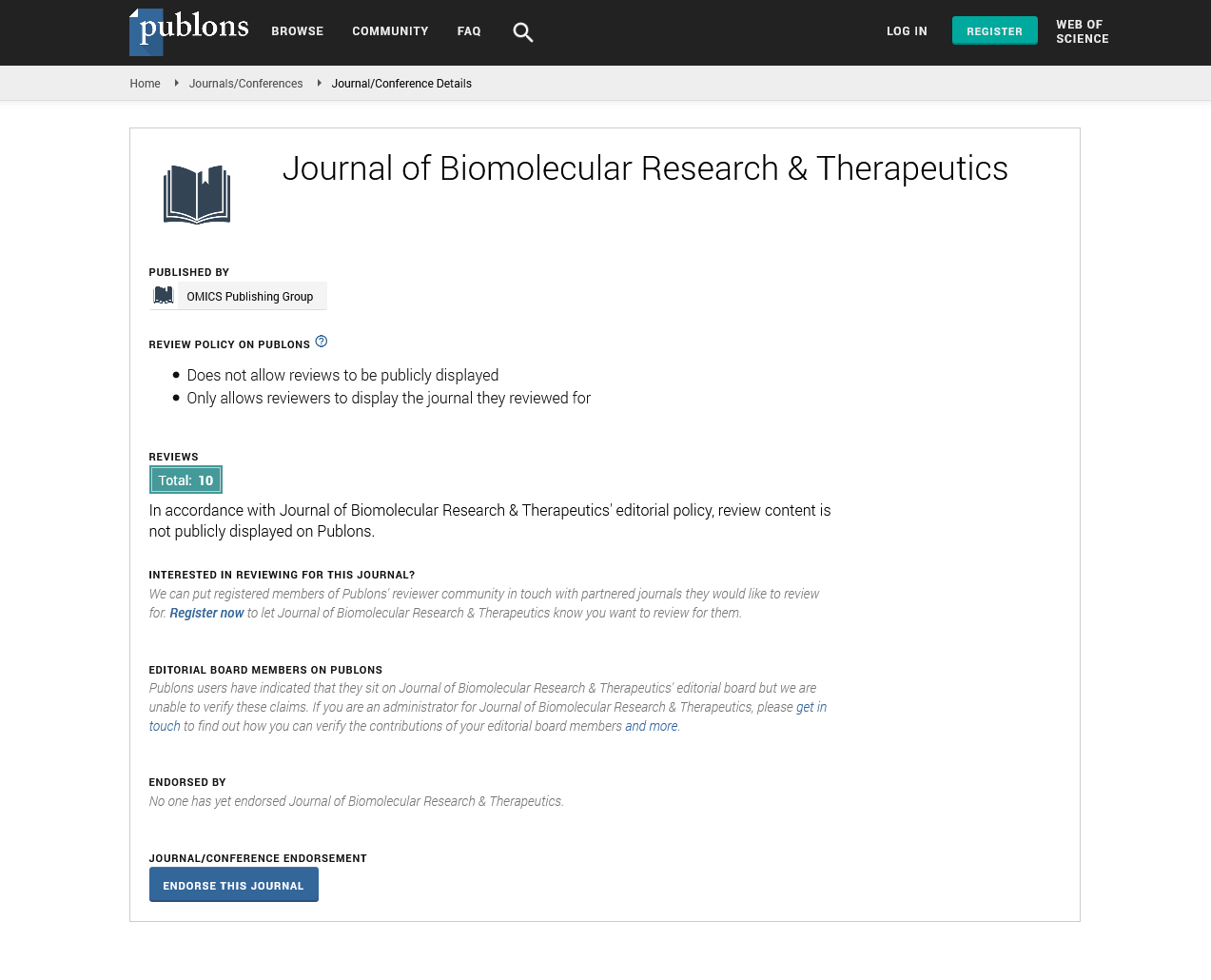PMC/PubMed Indexed Articles
Indexed In
- Open J Gate
- Genamics JournalSeek
- ResearchBible
- Electronic Journals Library
- RefSeek
- Hamdard University
- EBSCO A-Z
- OCLC- WorldCat
- SWB online catalog
- Virtual Library of Biology (vifabio)
- Publons
- Euro Pub
- Google Scholar
Useful Links
Share This Page
Journal Flyer

Open Access Journals
- Agri and Aquaculture
- Biochemistry
- Bioinformatics & Systems Biology
- Business & Management
- Chemistry
- Clinical Sciences
- Engineering
- Food & Nutrition
- General Science
- Genetics & Molecular Biology
- Immunology & Microbiology
- Medical Sciences
- Neuroscience & Psychology
- Nursing & Health Care
- Pharmaceutical Sciences
Commentary - (2022) Volume 11, Issue 8
A brief note on Nucleic acids
Sungjee Kim*Received: 20-Apr-2022, Manuscript No. BOM-22-16213; Editor assigned: 21-Apr-2022, Pre QC No. BOM-22-16213(PQ); Reviewed: 05-May-2022, QC No. BOM-22-16213; Revised: 20-Jun-2022, Manuscript No. BOM-22-16213(R); Published: 27-Jun-2022, DOI: DOI: 10.35248/2167-7956.22.11.231
Commentary
Nucleic acids are biopolymers, or macromolecules, that are vital for all life forms. They are made up of nucleotides, which are three component monomers consisting of a 5 carbon sugar, a phosphate group, and a nitrogenous base. They are twomain types of nucleic acids, Deoxyribonucleic Acid (DNA) and Ribonucleic Acid (RNA).
Nucleic acids are naturally occurring chemical compounds that make up the genetic material and act as the major informationcarrying molecules in cells. Nucleic acids are abundant in all living things, where they create, encode and store information for every living cell in every life form on the planet. Then they convert and express the information to the inner cell activities and ultimately to the future generation of each living thing both inside and outside the nucleus.
Nucleic acid is a linear polymer (chain) of nucleotides. Each nucleotide is composed of three components a purine or pyrimidine nuclease, sometimes called a nitrogen base or simply a base a pentose sugar, and a phosphate group that acidifies the molecule. The substructure consisting of nucleases and sugars is called a nucleoside. Nucleic acid types differ in the sugar structure of nucleotides. DNA contains 2 deoxyribose and RNA contains ribose the only difference is the presence of hydroxyl groups. The nucleon verses found in the two nucleic acids are also different. Adenine, cytosine, and guanine are found in both RNA and DNA, while thymine is found in DNA and uracil is found in RNA.
Nucleic acid based assays identify changes in DNA or RNA sequences that reflect changes in the molecule. These deviations can be rearrangements or mutations. They alter gene expression, bioactive molecules, and regulatory pathways. The way this happens is like human illness. Genetic differences because a wide range of changes, from whole chromosome effects that can be visualized by karyotyping or cytogenetic to point mutations that cause changes in protein function or expression. Small molecules such as steroid hormones require protein enzymes. This means that genetic alterations can affect all factors of endocrine function, which are important targets for analysis.
Nucleic acid, an important component of living organisms, is a long chain polymer consisting of nucleotides. Nucleic acid is named because of its chemical nature and the observation that it is the main component of the cell nucleus. The fact that they form the chemical basis for the transmission of genetic traits was not recognized until 1941. Nucleotides can function as energy sources, among other things, in the form of ATP, physiological signaling mediators, second messengers, and allosteric enzyme effectors. This article summarizes nucleotide metabolism and provides a summary of nucleic acid dietary sources.
Nucleic acid molecules have the unique ability to fuse with complementary base pair sequences. Hybridization occurs when a fragment of a known sequence probe is mixed with a sample containing complementary sequences under certain conditions. This function is like the antibody-antigen binding used in immunoassays. Many of the formats used in immunoassays are used in nucleic acid assays, including the same signaling system (radioactivity, fluorescence, etc.) and the same solid phase capture system. In situ hybridization, including the binding of the probe to intact tissue and cells, provides morphological localization information like that provided by immunohistochemistry.
Citation: Kim S (2022) A Brief Note on Nucleic Acids. J Biol Res Ther. 11:231.
Copyright: ©2022 Kim S. This is an open-access article distributed under the terms of the Creative Commons Attribution License, which permits unrestricted use, distribution, and reproduction in any medium, provided the original author and source are credited.

